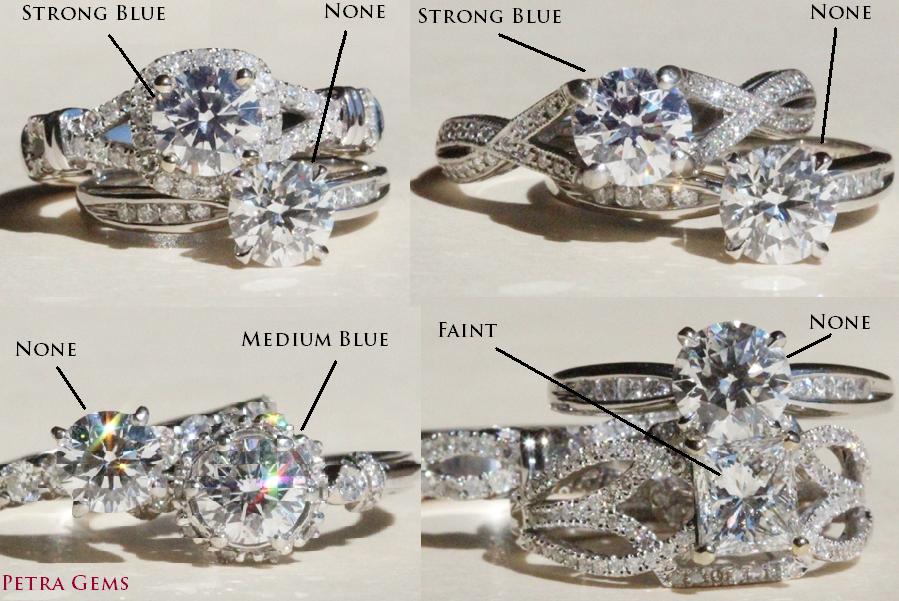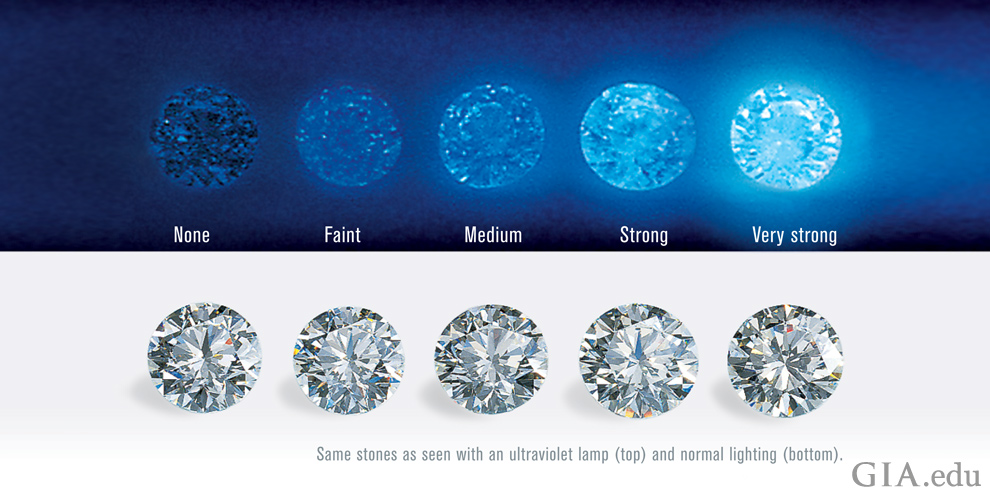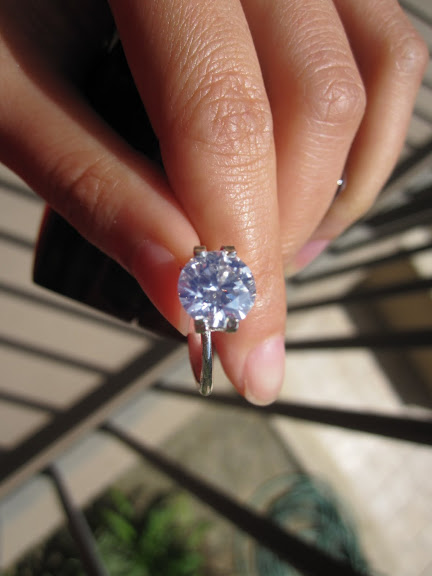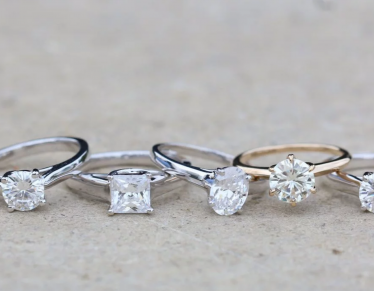Think about the last time you shopped for a diamond (even if you were browsing and had no intention of buying – we’ve all done that!). Did you consider the diamond’s cut? The clarity? Color? Carat? Known as the 4 c’s, this is what everyone has been told to consider when shopping for diamonds. But what about the diamond fluorescence?
If you are like many people, you may have never even heard of diamond fluorescence. What is it, and is it also important when buying? While the 4 c’s are undoubtedly crucial, the fluorescence of the diamond you choose can have a big impact on the diamond’s appearance.
So, what is diamond fluorescence, why does it matter, and how should it impact your buying decisions? Here’s everything you need to know!
What is Diamond Fluorescence?
When thinking about how a diamond looks, you probably think of its brilliance or sparkle. But that is not what fluorescence is! While brilliance describes how a diamond looks when light hits it, fluorescence describes how a diamond looks under ultra-violet (UV) light, such as a blacklight, or natural sunlight.

Interestingly, not all diamonds will fluoresce under UV light. Only around 30% of diamonds will give off a fluorescent glow. For the 30% that do, they will emit a blue glow. Occasionally, they may emit a different colored light, such as a white or orange glow, but that is very rare.
Why Does Diamond Fluorescence Matter?
We know what you’re probably thinking: Why does this even matter? Unless you are planning to attend a blacklight party, it won’t matter what your diamond looks like under UV lights, right? You would be wrong!
While it is true that you likely will not find yourself looking at your diamond under black-lighting very often (if ever), the fact is that a diamond’s fluorescence can impact how it looks in regular lighting as well. It may also appear different in natural daylight (as in natural UV light from the sun), so it is essential to keep this characteristic in mind when buying a diamond.
Fluorescence can either improve the appearance of a diamond or make its appearance worse, depending on the level of fluorescence and the quality of the diamond. In some instances, a slight degree of fluorescence can make a diamond appear whiter. This is mainly the case when you are dealing with a diamond that is not perfectly colorless and instead has a slightly yellow hue. Looking at the diamond in natural daylight may make it appear somewhat whiter because of the fluorescence.
On the other hand, too much fluorescence can have a negative impact on specific diamonds, giving them a cloudy or milky appearance. This can occur if you have a diamond that has a strong level of fluorescence, or even in diamonds that have low levels of fluorescence but have a high color rating (meaning they are naturally colorless or nearly colorless).
Scoring Diamond Fluorescence
While a diamond’s fluorescence doesn’t factor into its overall grade (that is based on the 4 c’s), it is a defining characteristic that you should see when looking at a complete diamond certification.

The GIA (Gemological Institute of America) has a rating system that they use when describing fluorescence. A diamond can be described as:
? None: There is no fluorescence at all.
? Faint: There is a slight fluorescence here, but it will have no impact on the color or appearance of the diamond.
? Medium: With this rating, there is some diamond fluorescence present, and it may affect the color and appearance of the diamond.
? Strong: Here, you have got a strong level of fluorescence, and it will have an impact on the diamond’s appearance.
? Very Strong: Similarly, diamonds with solid fluorescence will have significant color change and appearance changes due to the fluorescence.
Tips for Buying Diamonds
So, how much do you need to worry about diamond fluorescence when buying a diamond? While it is something that you should consider, it is certainly not more important than the main characteristics that you need to analyze: Cut, color, clarity, and carat.

It is also essential to keep in mind that only about 30% of diamonds fluoresce at all, so there’s a chance you may not even look at any diamonds that have this factor at all. If you do come across diamonds that do have some fluorescence, here are our main tips for making the right decision:
✓ Check the rating and see what the diamond is given. If it is only a faint fluorescence, you don’t need to worry.
✓ If you are worried about fluorescence, no matter what rating was assigned, ask to see the diamond under a black light, and more importantly, ask if you can see it in natural daylight.
At this point, if it looks okay to you when seeing it in daylight, that is what matters the most. If it does appear hazy or cloudy, it’s probably not the diamond for you.
✓ Keep in mind that a diamond with fluorescence will typically cost less, but in many cases, the difference is not noticeable. If you don’t notice a difference, it can be a nice way to save some money.
✓ If you are looking at a diamond with a lower color rating, some fluorescence can help the diamond appear whiter. In this case, the fluorescence may make the diamond more expensive than other diamonds with the same color rating that do not fluoresce.
✓ When in doubt, always ask about the jewelry store’s return policy in case you decide on a diamond with some fluorescence and you end up not happy with it.
Wrapping Up
A lesser-known characteristic, diamond fluorescence can impact a diamond’s appearance, so it’s best to know all the facts! While only about 30% of diamonds experience this, for that 30%, you want to make sure you don’t end up with a diamond that looks hazy or cloudy.
High levels of fluorescence can produce that cloudy appearance in a colorless or nearly colorless diamond. For diamonds with a bit of a yellow hue, the fluorescence may make the diamond appear whiter.
Now that you know all about diamond fluorescence, be sure to look for that rating the next time you are shopping for diamonds and looking over a diamond certification!
What are your thoughts on diamond fluorescence – does it seem cool to you, or will you be sticking to the 70% of diamonds that don’t fluoresce at all? Let us know!




